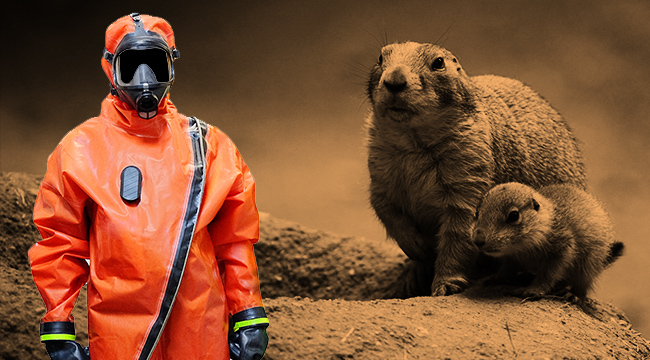
Arizona, as the headlines keep telling us, has the plague. “Wait,” you’re likely thinking, “the plague? Like, the plague plague, that I learned about in high school history?” And the answer is yes. But before you freak out, or cancel that flight to Phoenix, here’s what’s really going on.
First of all, when we say “the plague,” we mean the bacterium Yersinia pestis. A nasty little customer, Yersinia basically blocks up the gut of a flea until it vomits on its host, a rodent like a squirrel, a chipmunk, or what have you. From there, the disease can jump to pets if your cat or dog interacts with an infected rodent (i.e. they try to eat it.) Once your pet is sick, they can give you the plague just by coughing on you. Once in a human host, it can cause bubonic plague, what you learned about in high school with the swelling of the lymph nodes, but also septicemic plague and pneumonic plague. Back in the 6th century and the Middle Ages, Yersinia killed millions and changed the course of human history.
But we don’t live in medieval Europe, so what the heck is it doing in the 21st-century US? And why the Southeast specifically? Nobody knows for sure, but it’s believed that lax safety procedures in the late 1890s and early 1900s in San Francisco lead to a massive outbreak in the city, with the plague spreading to the Southeast thanks to its abundant supply of many kinds of rodents, most notably prairie dogs. The plague is primarily a disease that strikes rodents, so it can be all around you and unless you regularly mess with rats and chipmunks, you’d never even notice. It’s been a health problem in the Southeast ever since, with roughly seven cases of the plague turning up in humans yearly. However, since it’s the 21st century, getting the plague means a course of antibiotics; if you catch the plague early, you’ll be fine.
That said, what’s worrying is that this time around, the plague seems to be more widespread among rodent populations. Fleas with plague bacteria were found 120 miles apart in Arizona, after plague turned up in New Mexico in June, which hints that a plague outbreak might be underway in the wild. This is bad for reasons well beyond human illness; prairie dogs are a “keystone” species, a major food source for predators and source of burrows and shelter for other animals. If they go away, a lot of other species in the Southwest ecosystem go away as well. Fortunately, we’ve had some success raining chocolate and peanut butter plague vaccine from the sky, but vaccination efforts will need to be stepped up.
The good news, at least from a human health and keeping your pets plague-free perspective, is that it’s easy to prevent transmission of the plague. Southwesterners just need to keep pets indoors, and if they walk the dog or the cat (hey, it’s a thing), keep them on a leash and away from any rodents they might see, dead or alive. They also need to take measures to keep rodents away from their homes, which they’re likely already doing since prairie dogs are only cute when they’re not destroying your lawn. Do that, and you’ll be safe from the plague. And if you must deal with prairie dogs, may we recommend the giant vacuum?






